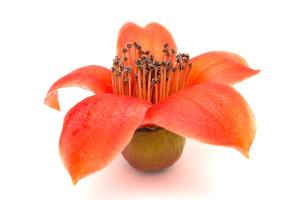Can You Plant Swiss Chard with Tomatoes?
Swiss chard and tomatoes are two popular vegetables in the garden. They are both easy to grow and can be harvested throughout the summer season. But can these two plants be grown together? The answer is yes!
Why Plant Swiss Chard with Tomatoes?
There are a few reasons why planting Swiss chard with tomatoes is a great idea. For starters, Swiss chard is a cool-season crop that can tolerate the heat of summer. By planting it with tomatoes, you can create a microclimate that provides shade and helps keep the soil cool.
Additionally, Swiss chard is a nutrient-rich vegetable that can help improve the soil quality around your tomato plants. Its deep roots help break up compacted soil and improve drainage, while its leaves and stems are rich in nitrogen, phosphorus, and potassium, all of which are important for healthy tomato growth.
How to Plant Swiss Chard with Tomatoes
So, now that you know why planting Swiss chard with tomatoes is a good idea, how do you go about doing it?
First, you'll want to choose a sunny spot in your garden that gets at least 6-8 hours of direct sunlight per day. Both Swiss chard and tomatoes thrive in sunny, warm conditions.
Next, prepare your soil. Swiss chard prefers well-drained, moist soil that's rich in organic matter. Tomatoes prefer soil that's slightly acidic (pH 6-6.8) and also rich in organic matter. You can improve your soil by adding compost, aged manure, or other organic amendments before planting.
Once your soil is prepared, you can plant your Swiss chard and tomatoes. Swiss chard is best planted in early spring or late summer, while tomatoes are typically planted in late spring. To plant them together, simply space them out evenly in the garden bed, making sure to give each plant enough room to grow.
You can also interplant Swiss chard and tomatoes in the same row. Start by planting your tomato plants, leaving about 18-24 inches of space between them. Once your tomatoes are established, plant your Swiss chard in the space between them.
Caring for Swiss Chard and Tomatoes
Both Swiss chard and tomatoes require regular watering and fertilizing throughout the growing season. Water your plants deeply once a week, making sure to soak the soil to a depth of at least 6 inches. Fertilize your plants every 3-4 weeks with a balanced fertilizer that's rich in nitrogen, phosphorus, and potassium.
You'll also want to keep an eye out for pests and diseases. Swiss chard is relatively pest-free, but tomatoes can be susceptible to diseases like blight and pests like aphids and tomato hornworms. To prevent these issues, keep your plants well-spaced and well-ventilated, and use organic pest and disease control methods when necessary.
Harvesting Swiss Chard and Tomatoes
Swiss chard can be harvested throughout the growing season, starting when the leaves are at least 4-6 inches long. To harvest, simply cut the outer leaves from the plant, leaving the inner leaves to continue growing. Swiss chard leaves can be eaten raw or cooked and are delicious in salads, stir-fries, and soups.
Tomatoes are typically harvested when they're fully ripe and have turned a deep, rich color. To harvest, gently twist the tomato off the vine, being careful not to damage the stem or the plant. Tomatoes can be eaten raw or cooked and are a versatile ingredient in many dishes, from salads to sauces to pizzas.
Conclusion
So, there you have it - Swiss chard and tomatoes can be grown together in the garden! By planting these two vegetables together, you can create a healthy, nutrient-rich garden that's perfect for summer harvesting. Give it a try in your garden this year, and see how it goes!

 how many times do yo...
how many times do yo... how many planted tre...
how many planted tre... how many pine trees ...
how many pine trees ... how many pecan trees...
how many pecan trees... how many plants comp...
how many plants comp... how many plants can ...
how many plants can ... how many plants and ...
how many plants and ... how many pepper plan...
how many pepper plan...





























